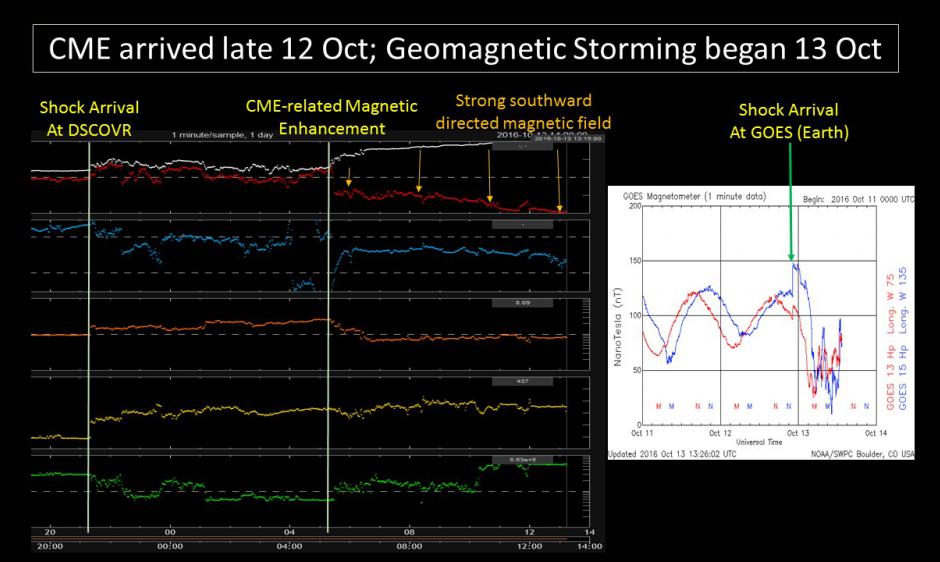
The expected CME arrived late on the 12 Oct UTC-day. A weak shock arrival was observed at DSCOVR (L1-point) at 12/2121 UTC (12 Oct; 5:21 pm ET) as solar wind speed, density, and total magnetic field strength increased at that time (pictured left). These are indications of a CME arrival. A sudden impulse was observed at Earth at 12/2214 UTC (12 Oct; 6:14 pm ET) as the planetary network of magnetometers measured a geomagnetic deviation simultaneously. The magnetic disturbance was also noted at the GOES satellite (pictured right) as a magnetic enhancement. As the magnetic field of the passing CME continued to strengthen; its orientation continued to be in a favorable, southward direction - allowing for better connection with Earth's magnetic field and causing geomagnetic storming to begin. Geomagnetic storming first reached G1 (Minor) levels as of 13/0815 UTC (13 Oct; 4:15 am ET). Continue to monitor geomagnetic storming updates due to this CME-related activity, by visiting our SWPC website.